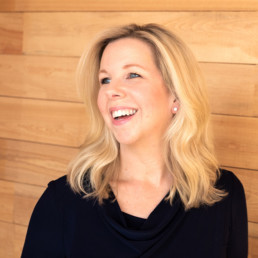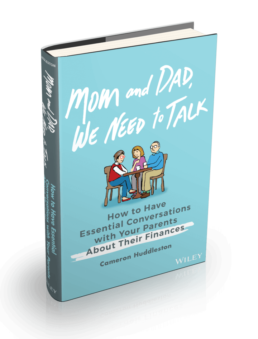In one month alone, I was hit with three unexpected expenses: a $475 roof repair, $538 for prescription drugs so my kids and I could battle the flu, and a $2,000 insurance deductible for my daughter’s $7,000 hospital stay.
Add it all up, and it comes to $3,031.
Nearly half of Americans couldn’t cover a $400 emergency expense, according to a Federal Reserve study. My emergencies cost more than seven times that amount. But they didn’t send me into a financial tailspin because I was prepared.
When it comes down to it, you should expect unexpected expenses. That sounds like an oxymoron, but emergencies are bound to happen. However, they don’t have to leave you searching your home for things to sell, calling friends or family to bail you out, or racking up big-time debt on your credit card if you take these steps – NOW.
Have an Emergency Fund
You probably remember when you got your first credit card and your parents told you to use it only in an emergency. So why not count on credit when you have to repair your car or pay for a visit to the ER? You can if you can pay off the balance quickly.
But if you’re going to carry that balance for months, you’re going to pay a lot more than the original cost of that emergency thanks to the interest on your credit card. With each unexpected expense that pops up, that balance is going to grow.
A better option is to have cash in a savings account. Financial experts usually recommend having enough to cover six months’ worth of expenses. That’s based on the amount of time it usually takes someone to find work if they lose their job – and it’s a hefty sum. So don’t feel pressured to set that much aside all at once.
The key is to get into the habit of setting aside money each month. I know you might be thinking that you don’t have any room in your budget to put cash in savings. But ask yourself: How many times did you go out to eat or get carry-out last month? Are you paying for more data for your cell-phone plan than you actually use? Are you shelling out more than $100 each month for a premium cable package?
There are plenty of expenses you probably can trim. You don’t have to cut out everything you enjoy. Instead, prioritize unnecessary expenses and cut the ones that bring you the least pleasure. Then have that amount automatically transferred from your checking account to a savings account at the beginning of the month before you have the chance to spend the money.
Give the account a name to motivate yourself to save. You can call it “emergency fund,” “oh sh*t fund” or “this is gonna save my a** fund.” Labeling it should remind you that you can only touch the money when absolutely necessary – not because you need cash for a new purse or a fancy dinner.
Take Advantage of an HSA or FSA
What saved my family from the hefty medical expenses we were hit with in January was my husband’s health savings account. Because he has a high-deductible health care plan at work, his employer allows him to contribute money to an HSA.
The money comes out of his paycheck before taxes – which lowers his taxable income. By putting money into an HSA, he actually gets to keep more of his money rather than handing it over to the IRS. Then he can withdraw the money tax-free from the HSA to pay for out-of-pocket medical expenses, such as deductibles. It’s like an emergency fund for health care.
You can contribute up to $3,500 to an HSA in 2019 if you have individual health coverage with a deductible of at least $1,350. You can contribute up to $7,000 if you have family coverage with a deductible of at least $2,700.
If you’re self-employed and have a high-deductible plan, you can open your own account with an administrator such as Health Savings Administrators.
If you don’t have the option of an HSA, your employer might allow you to contribute to a flexible spending account for health care. You can contribute up to $2,700 to an FSA and use the money to pay for out-of-pocket health care costs. The one drawback to these accounts is that you usually must use all of the money you set aside each year. You can’t carry over unused funds from year to year.
Make Sure You Have Enough Insurance Coverage
To cover the really big emergencies, you need to make sure you have enough insurance coverage. In addition to health insurance, homeowners insurance and auto insurance, you need life insurance if someone relies on you financially. And you need disability coverage to replace your income if a disability leaves you unable to work.
Yes, there’s a cost to all of these types of coverage. But it’s a lot less than the amount of money you’d have to come up with to cover a major emergency – such as cancer treatments, a fire that destroys your home, the death of a spouse.
You can learn more about protecting yourself against emergencies in this article I wrote for GOBankingRates: How to Prepare for the Financial What Ifs in Life.
So maybe you can’t go out to eat every week or buy a latte every day in order to have enough cash to stash away for emergencies. But these are much smaller sacrifices you have to make than the ones you’ll be faced with if you’re hit with a major financial emergency.
Don't Miss Out! ORDER NOW!
"An excellent step-by-step guide to navigate what can be time-consuming, uncomfortable conversations."
- Michelle Singletary, The Washington Post
Related Posts
May 7, 2025
How to Talk to Your Parents About Their Stuff You Don’t Want
These tactics might get your parents to…
October 29, 2024
How Much Should You Tell Your Kids About Your Finances?
What you should tell your kids at…

Cameron Huddleston
I am the author of Mom and Dad, We Need to Talk: How to Have Essential Conversations With Your Parents About Their Finances. I also am an award-winning journalist with 20 years of experience writing about personal finance. My work has appeared in Kiplinger’s Personal Finance, Forbes.com, Yahoo!, MSN, and other online and print publications.




